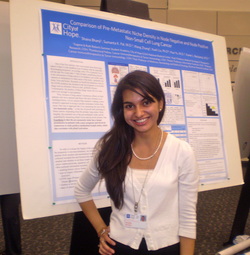|
8/16/2011 0 Comments Never Blame the Customer The delay in posting comes from both a need to brainstorm for a topic I find interesting and lack of internet connection. Clearly, both problems have been fixed. The former was fixed when I happened to be in a shoe store at the right time. I overheard (I eavesdropped, but it was for the sake of my blog) an argument between a customer and the store's manager (though he also said it was his first day on the job...). The elderly customer had ordered shoes for her swollen legs months ago, only to find out that the store ordered what was clearly the wrong size (only her toes fit into the shoe). She explained that she had been fitted after trying on many shoes and there was no way that the person helping her could have ordered the size that they did after an hour of shoe shopping. To my utter disappointment, the manager began to defend not the customer, but his own employee, stating (actually it was almost like yelling) that his employee would not do such a thing. Not only would I not recommend this shoe store to anyone (but for the sake of the store, I won't name it here), but I would also say that the first rule of customer service is and should always be: don't blame the customer! Perhaps it was the customer's fault, or maybe it was actually the fault of the employee, or maybe of the warehouse that shipped the shoe...there are so many variables. But when it comes down to it, the buck stops with the store, not with the customer relying on the store for efficient, competent, and most importantly courteous service. Now, I can assure you that as I stood in the store pretending to mind my own business, I was not only infuriated on the inside, but also had an instant light bulb for this blog post. The connection may seem weak at best, so let me clarify. Consider the patient as the customer and the doctor/nurses/hospital as the store. A handful of the patients I saw this summer were small cell lung cancer (SCLC) patients. Small cell is perhaps the most aggressive form of lung cancer, and almost always occurs in smokers. It responds very well to initial treatment--almost cruelly tricking the patient and his/her family--because unfortunately, it usually recurs a short period of time later. A logical question of SCLC patients is, "If I hadn't smoked, or if I had quit earlier, could I have prevented my disease?" While the conventional wisdom of a medical oncologist specializing in lung cancer may say yes, the honest answer is: who really knows? Nothing says that a nonsmoker can't have SCLC, as proven by a 2006 article in Nature. No one deserves to have cancer, and just because the patient is a smoker, doesn't mean it's his/her fault that they got such a terrible disease. One may argue that sources such as Harvard Medical School cite that 85-90% of patients who die from cancer are smokers. But the article goes on to say that 15,000 nonsmokers die from the lung cancer annually. Scientists (including the ones I worked with) are eager to continue to learn more about the differences in cancer biology between smokers and nonsmokers. But even so, no doctor has a crystal ball. As the Nature article points out, you can still have SCLC if you don't smoke. The bottom line is, smoker or not, the patient cannot be blamed for his/her disease. The best option is to let go of past regrets that could hinder the patient's attitude (and we've seen that attitude is important), and to treat the patient as best as possible. Maybe a lung cancer specialist should give that shoe store a lesson on customer service. 1. http://www.health.harvard.edu/fhg/updates/Lung-cancer-not-just-for-smokers.shtml 2. http://www.nature.com/nrclinonc/journal/v3/n7/full/ncponc0534.html
0 Comments
8/4/2011 0 Comments No Such Thing as "Game Over"One of the first statistics that most people hear about lung cancer is that it is the deadliest type of cancer with an especially discouraging prognosis: on average, only 15% of patients live to tell the tale five years later. (1,2).
* * * During my time spent conducting research and seeing patients, I've not only learned that lung cancer is the leading cause of cancer death, but I've also seen why; the reason comprises of a number of factors, one of which is likely metastasis to the brain, liver and bones. Our research project, entitled Comparison of Pre-Metastatic Niche Density in Node Negative and Node Positive Non-Small Cell Lung Cancer, was, in the most general terms, an effort to find a way to predict metastases before they occur. For those who would like some more tangible science to grasp on to, we collected data on 60 patients (smokers and nonsmokers) to see if they had benign lymph nodes available and then looked to see whether they had any involved (cancerous) lymph nodes...the goal being to see if CD68 (a glycoprotein on myeloid cells) and pSTAT3 (a transcription factor important in programmed cell death) could be used as markers to determine the prominence of a pre-metastatic niche. The pmn is an idea (much like that of the stem cell niche) that there is a hub where cancer cells grow and eventually metastasize. After more than eight weeks of looking through medical records to collect data from pathology and operative reports, it was finally time to analyze the data. As I anxiously looked at the results, I was honestly shocked when we didn't find what we expected. That being said, a lot of our current data is censored, because some information is still being collected. So we may eventually see some correlation between our markers and nodal stage (a measure of how much cancer has spread to the lymph nodes of the chest, and which specific nodes). My point is that more often than not scientists don't find what they're looking for or what they expected. But that's the beauty of it. If a child always got what he or she wanted, the child would be spoiled just as if scientists always found what they were looking for, I believe they'd become complacent. Just because you don't find what you expected doesn't mean you didn't find anything at all. As my mentor pointed out, there's always a positive spin on what you did find, and it pushes you to take a different approach to your question. Shocked as I may have been, I've learned there's no such thing as "game over" when it comes to science. 1. "Cancer of the Lung and Bronchus - SEER Stat Fact Sheets." Surveillance Epidemiology and End Results. National Cancer Institute & U.S. National Institutes of Health. Web. 06 July 2011. <http://seer.cancer.gov/statfacts/html/lungb.html>. 2. Jemal A, Siegel R, Ward E, et al: Cancer Statistics, 2009. CA A Cancer Journal for Clinicians 59:225-249, 2009. |
City of Hope National Medical Center Internship
|
The Scientista Foundation, Inc. All Rights Reserved © 2011-2021 | Based in NY | contact@scientistafoundation.org
The Network for Pre-Professional Women in Science and Engineering
The Scientista Foundation is a registered 501(c)(3) -- Donate!
The Network for Pre-Professional Women in Science and Engineering
The Scientista Foundation is a registered 501(c)(3) -- Donate!



 RSS Feed
RSS Feed